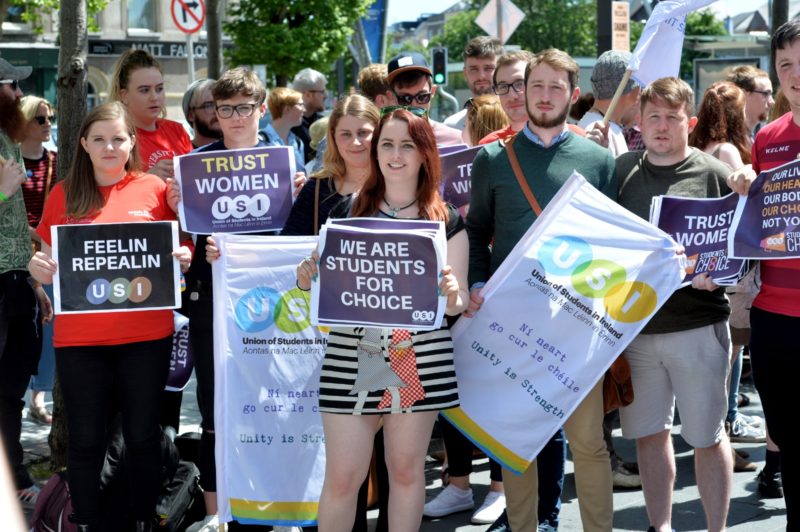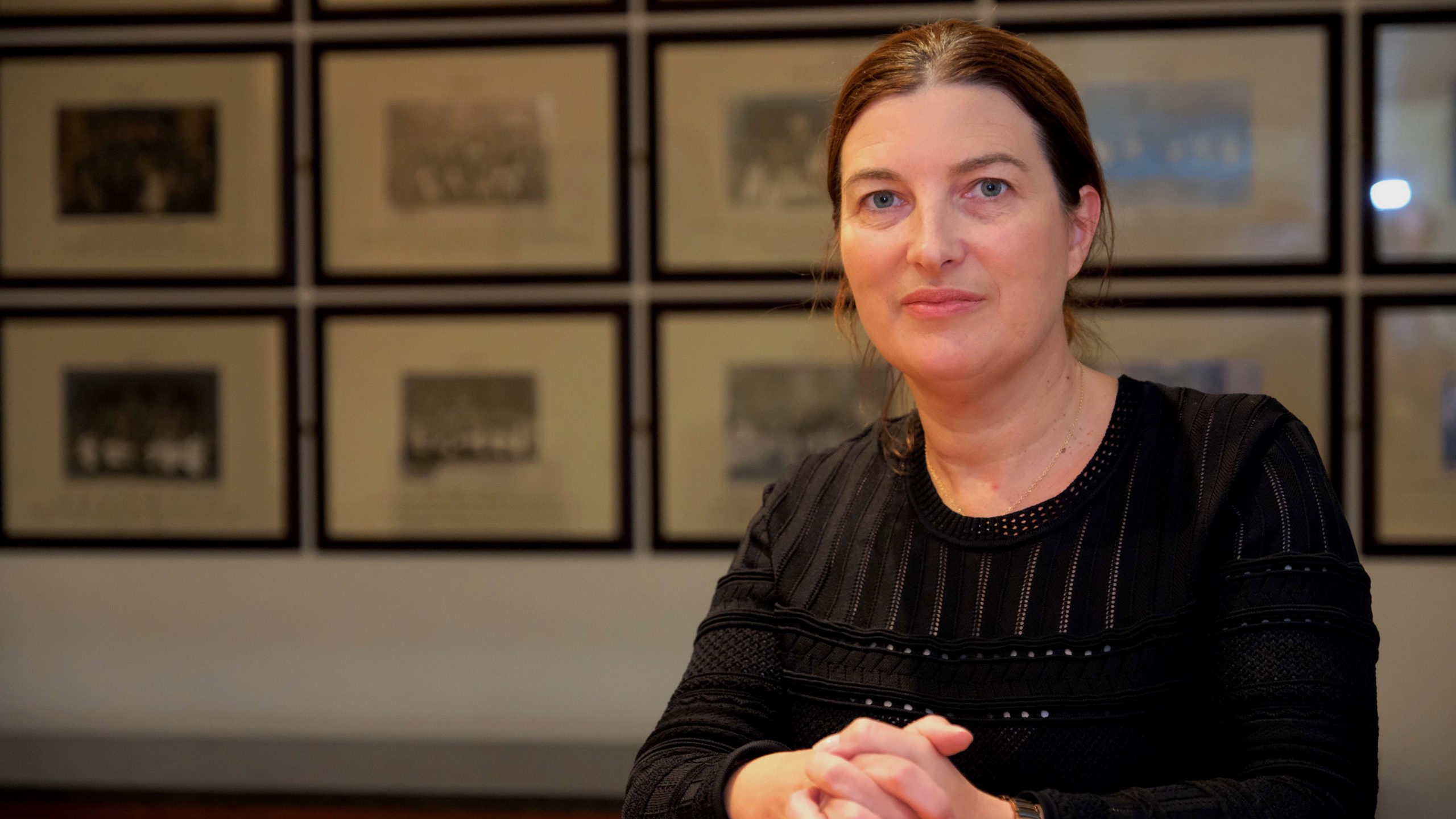In the past, women in Ireland had to have abortions secretly or abroad. Following a referendum, abortions have been made legal in the Republic of Ireland in 2018 and in Northern Ireland the following year. Despite that, there are still fierce protests outside surgeries and clinics. An approach to a highly emotive topic.
By Mareike Graepel, Dublin
The number of abortions in Ireland has risen in 2019. Opponents therefore feel vindicated: Until the law change came into force the previous year, there were not hundreds, but “only” 32 abortions. Official figures are not yet available for this year – but every abortion in 2019 is one that Irish women no longer had to have abroad or brought on through pills ordered on the internet, in secret and not without risk. To put this into perspective: by the end of 2018, nine women a day left Ireland to have an abortion in England or the Netherlands, according to the address details in the clinics’ questionnaires.
The reason behind this was one of the strictest abortion laws in the world. “Even a minor who was raped by her father was forced by Irish law to carry the child to term,” says Kelly Mackey from the non-governmental organisation Amnesty International Ireland. If the women or girls decided to have an abortion, they could have been jailed for up to 14 years. The law stated that once the egg was fertilised, it had the same right to life as the mother. The law also applied in cases of rape, incest, endangerment of health and serious or life-threatening foetal malformations. Only women whose lives were threatened had the right to terminate a pregnancy. According to Amnesty International, Ireland therefore violated fundamental rights of women and also international human rights standards.
A referendum on May 25, 2018 changed all that. Following the #hometovote call, thousands of Irish emigrants travelled home to vote and were greeted at the airport by supporters and opponents with placards. They not only contributed to an unusually high voter turnout of around 64 per cent, but also helped to bring about the 36th amendment to Ireland’s constitution in a landslide: Almost 1.5 million Irish voters voted in favour of legalising abortion in the Republic – 66 per cent. A corresponding change to the law also came into force in Northern Ireland – at the same time as the legalisation of same-sex marriage.
In the south of the island, the law had begun to waver years ago when the story of Savita Halappanavar made headlines around the world in 2012: the medical staff at Galway University Hospital had refused her request for an abortion following a partial miscarriage on the grounds that granting her request was illegal under Irish law. She died of septicaemia.

Following this, Irish women began to tell their own stories, and louder. “I am not your incubator” they wrote on banners at demonstrations, or: “Keep your rosaries from our ovaries”. Journalist Róisín Ingle caused heated debate in her column in the Irish Times newspaper when she wrote: “My experience is not something strange, unique or unusual. It is something that many other women in Ireland and around the world can relate to: I had an abortion. I’m glad I did it.”
And there’s Tara Flynn. The comedienne and actress became pregnant unplanned at the age of 37 and travelled to Amsterdam – with a decision in her luggage that was not easy, but clear. “It was all the right thing to do. Apart from the fact that I would probably have lost the child for genetic reasons – there have been so many miscarriages in my family – I knew that I didn’t want to be pregnant.” Her age helped her with this. “Especially for younger women, comprehensive counselling and medical care without stigma and blame is hugely important. The current development has taken a long time, but it also shows how strongly women can claim power together. That gives me hope.”
The three-day deadline puts obstacles in the way of women
“Many fears about the change in the law have not been realised,” says Cliona Murphy, gynaecologist and Chair of the Institute of Obstetrics and Gynaecology in Dublin. She helped push for the abolition of the abortion ban. “Nobody is ever queuing up to have an abortion.” There are training courses and financial incentives to make it easier for GPs to access the topic – until now, abortion was not part of the curriculum at any medical faculty in Ireland. “There is still nowhere near nationwide care, many women have to travel to the next largest city for an abortion,” says the 50-year-old.
Today, abortions are permitted up to the twelfth week of pregnancy, or later in the case of life-threatening abnormalities. Up to the ninth week, abortions are performed in GP surgeries and between the ninth and twelfth week in a hospital. Regardless of their reasons, women can turn to any organisation that offers abortion services. Doctors, group practices and clinics that do not provide abortions for various reasons are not allowed to refuse patients, but must refer them to a place who does offer those services. All women and girls can find help on a specially set up website and hotline. In the first eight months, more than 9,300 affected women and girls made contact via that service.
Contraception was prohibited until 1980
The figures in England also speak for themselves: in the first nine months of the year, 75 per cent fewer women travelled abroad to an abortion clinic. In 2016, more than 3,000 Irish women went to the UK to have a legal abortion, in 2001 it was as many as 7,000. An expensive endeavour for many Irish women – especially in difficult economic times.
In general, it was not possible to prevent unwanted pregnancies for a long time. In Catholic Ireland, contraception was completely banned until 1980 and condoms were only available on prescription until 1985. They have only been freely available in shops since 1992, yet of course people have sex. In Ireland 42 per cent of women report having experienced at least one form of sexual abuse. Meaning – sex is often anything but consensual.

Furthermore, according to the Irish Family Planning Association (IFPA), one in four women in Ireland experiences an unplanned or crisis pregnancy. In a 2017 study, 38 per cent of Irish couples said they did not use contraception, while 30 per cent relied on the coitus interruptus method. Condoms are the most popular form of protection for 25 per cent of respondents, followed by the contraceptive pill.
If nothing else, these figures show that there is a great need for education and knowledge about reliable contraceptive methods. Gynaecologist Cliona Murphy points out: “The call for better education means a major cultural change.” In Ireland, the education of children and adolescents is in the hands of the church who runs more than 90 per cent of schools. This means that the approach to sexuality is often shaped by religious views.
Although the frequency of protests directly in front of hospital entrances has decreased since the referendum, there are still too many and too unobjective demonstrations. “They stand outside GP surgeries or clinics with white children’s coffins and baby heart beats blasting from loudspeakers,” reports Murphy. “This is a psychological burden not only for the women who actually need an abortion, but also for those who are going through a miscarriage and its consequences. Clinic staff also feel very harassed by these protests.” According to Murphy, many of the protesters are not Irish citizens, but right-wing populist Americans. “We still have a long and arduous road ahead of us, but we have made a start.”
Info: What is the situation in Germany?
An abortion is permitted in Germany if the pregnancy poses a health risk to the mother or is the result of a criminal offence, for example rape. Even if these circumstances do not exist, an abortion remains exempt from punishment, provided that the decision is made after pregnancy counselling and a three-day „cooling off“ period. The abortion may not be performed by the same doctor who provided the counselling.











